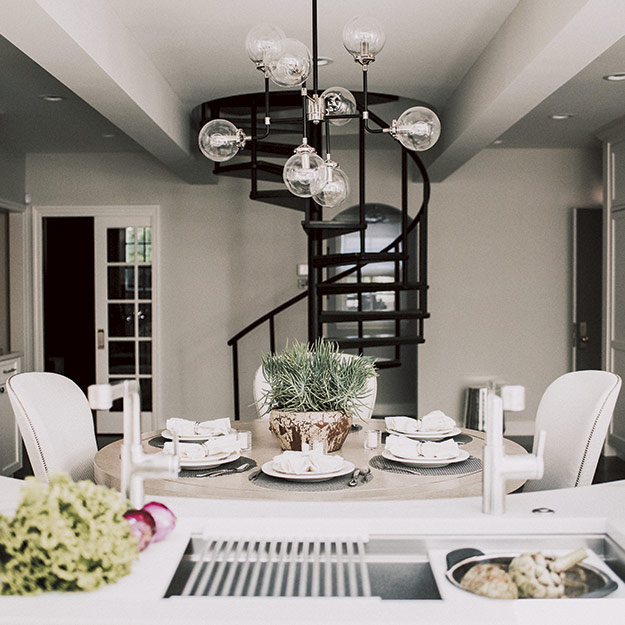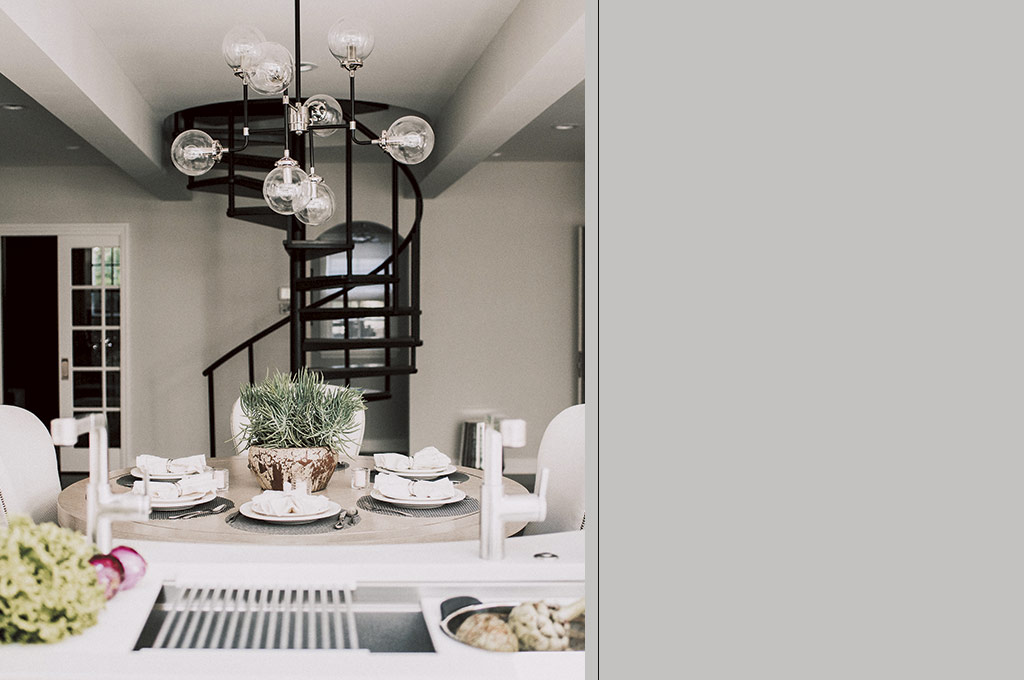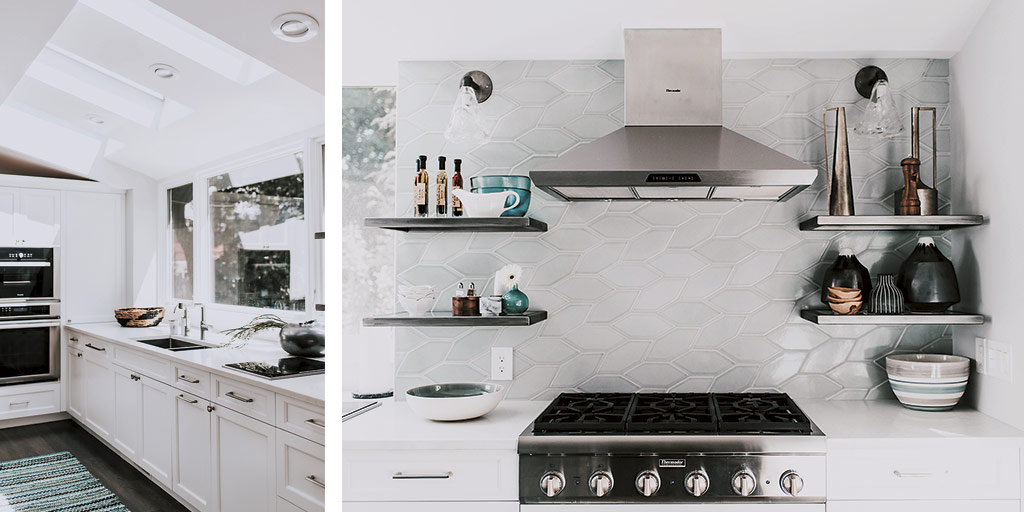The big, old-fashioned homes that line the East Side may look traditional from the street. But step inside and you may be surprised to find many inhabiting a transitional feel that pays homage to its classic architecture while infusing the space with modern elements.
When Dawn Cook, owner of Dawn Cook Designs in Shaker Heights, was faced with a redesign of a large family home in Shaker Heights, she paid attention to how the residents — a doctor, educator and two active teenagers — used the space.
Focusing on the expansive kitchen, she learned that the teens frequently brought friends home for lunch in the middle of the school day, so the area had to fit all of them — and couldn’t feel stuffy or uptight.
“People want much cleaner lines now — less fussy, more relaxed,” she says.
Cook opted for a transitional style, allowing for a fully functional, livable home that still exudes classic elegance.
A knockout in the middle of the kitchen, the spiral staircase was a natural focal point. To complement its curves, Cook brought in similarly shaped features, including helix-like artwork from Cleveland’s Bonfoey Gallery and a 1940s-inspired spherical glass chandelier with an industrial vibe from Restoration Hardware.





